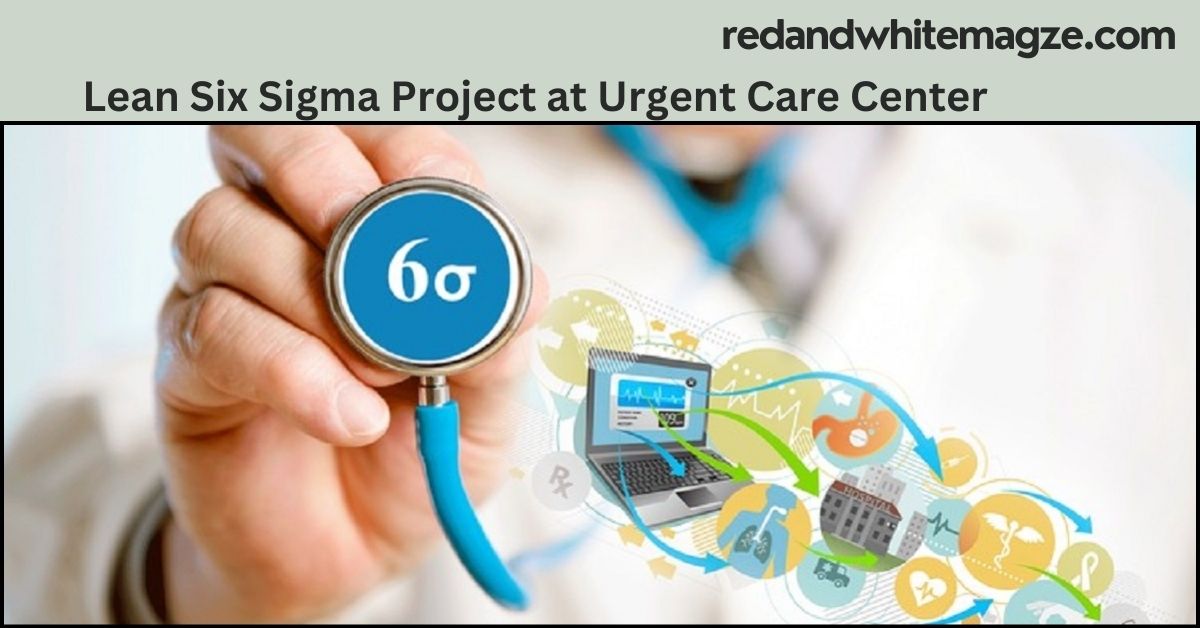Lean Six Sigma Project at Urgent Care Center: A Pathway to Operational Excellence
In today’s healthcare environment, urgent care centers face immense pressure to deliver fast, efficient, and high-quality care. With rising patient volumes and a growing demand for cost-effective solutions, urgent care centers must streamline their processes to remain competitive and provide optimal care. One such approach that has proven successful in achieving operational excellence is the Lean Six Sigma methodology.
This article will provide an in-depth exploration of how a Lean Six Sigma project at urgent care center can lead to remarkable improvements in patient care, cost reduction, and overall efficiency. We will also discuss the steps involved in implementing Lean Six Sigma, its key principles, and real-life examples of its application in urgent care settings.
What Is Lean Six Sigma?
Lean Six Sigma is a combination of two powerful methodologies: Lean and Six Sigma.
- Lean focuses on reducing waste in processes. It aims to streamline operations by eliminating anything that does not add value to the end-user.
- Six Sigma is a data-driven approach that seeks to reduce variability in processes, aiming for near-perfect performance. It focuses on identifying and eliminating defects in processes to enhance the quality of service.
When combined, Lean Six Sigma offers a comprehensive approach to improving both the efficiency and quality of processes, making it an ideal solution for urgent care centers.

Why Lean Six Sigma Is Crucial for Urgent Care Centers
Urgent care centers are designed to provide immediate, non-emergency medical care for patients. They typically face unique challenges that demand quick decision-making, effective management of resources, and streamlined workflows. Here are a few reasons why a Lean Six Sigma project at urgent care center can be transformative:
- Increasing Patient Flow: Urgent care centers often deal with fluctuating patient volumes. Lean Six Sigma can help optimize patient flow by streamlining intake procedures, reducing wait times, and improving staff coordination.
- Cost Reduction: Healthcare costs are on the rise, and urgent care centers are no exception. By eliminating inefficiencies, Lean Six Sigma can help reduce operational costs, such as unnecessary inventory, staffing inefficiencies, and time wasted in non-value-added tasks.
- Improved Patient Satisfaction: Speed, efficiency, and quality care are paramount in urgent care settings. Lean Six Sigma focuses on improving these aspects, leading to higher patient satisfaction and better patient retention.
- Enhanced Employee Satisfaction: A well-organized, efficient workplace reduces stress and burnout among staff. Lean Six Sigma helps create an environment where employees can focus on providing quality care rather than dealing with administrative bottlenecks.
Key Principles of Lean Six Sigma
To implement a successful Lean Six Sigma project at urgent care center, it’s essential to understand its core principles. These principles guide the efforts of healthcare professionals and staff in improving processes.
1. Define: Identify the problem or process that needs improvement. In the case of urgent care centers, this could include areas like patient wait times, billing errors, or staffing inefficiencies.
2. Measure: Gather data related to the current process. For instance, track patient wait times, staff turnover rates, and patient satisfaction scores. This step is essential for understanding the scope of the problem.
3. Analyze: Analyze the data to identify root causes of inefficiencies or defects. For example, is excessive paperwork leading to delays? Are there bottlenecks in the patient intake process?
Also Read: Canvas Alpine: A Comprehensive Overview
4. Improve: Develop and implement solutions to address the identified issues. For example, introducing digital check-ins to streamline patient intake or using a scheduling system to prevent overstaffing.
5. Control: Ensure that the improvements are sustained over time by creating monitoring systems and standardizing the new processes.
Real-World Examples of Lean Six Sigma in Urgent Care Centers
Several urgent care centers across the country have successfully implemented Lean Six Sigma projects to address various operational challenges. Let’s explore a few examples:
Example 1: Reducing Patient Wait Times
One urgent care center struggled with long wait times, especially during peak hours. The clinic’s administration used Lean Six Sigma principles to map out the patient flow from check-in to discharge. They identified bottlenecks at the check-in desk and during the triage process. By implementing a digital check-in system, reallocating staff during peak hours, and improving triage protocols, the center reduced patient wait times by 30%.
Example 2: Improving Billing Accuracy
Billing errors were a significant issue at another urgent care center, leading to delayed payments and patient dissatisfaction. A Lean Six Sigma project at the urgent care center identified inefficiencies in the billing process, including improper documentation and delayed data entry. Through staff training and the implementation of a new automated billing system, the center was able to reduce billing errors by 50% and improve overall revenue cycle management.
Example 3: Enhancing Employee Workflow
Staffing inefficiencies were a concern at another urgent care center. Nurses and medical assistants were often waiting for instructions or supplies, leading to wasted time. Lean Six Sigma tools were used to observe the workflow and reassign tasks. By re-designing job roles and organizing supplies more effectively, the center reduced idle time for staff by 20%, leading to increased efficiency and a more satisfied workforce.
Also Read: Attorney David Reffiter: A Comprehensive Guide to His Legal Expertise and Services
Steps for Implementing a Lean Six Sigma project at urgent care center
Now that we understand the basics, let’s dive into the steps involved in implementing a Lean Six Sigma project at urgent care center:
1. Assemble a Team
The first step is to assemble a dedicated team. This team should include healthcare professionals, administrative staff, and process improvement experts. Their collective expertise will be crucial in identifying areas for improvement and developing solutions.
2. Identify the Problem
Clearly define the problem you wish to address. Whether it’s reducing patient wait times, minimizing billing errors, or improving employee satisfaction, a focused problem statement is key to success.
3. Collect and Analyze Data
Gather relevant data to better understand the scope of the problem. This could include patient satisfaction surveys, staffing logs, or operational performance metrics. The data will help identify inefficiencies and areas for improvement.
4. Develop and Implement Solutions
Based on your analysis, develop solutions to address the identified issues. Solutions could range from process redesigns, technology adoption, or staff training. It’s important to test solutions on a small scale before full implementation.
5. Monitor and Standardize Improvements
Once improvements have been made, it’s crucial to monitor the results and ensure that the changes are sustainable. Standardize new processes and continue to collect data for continuous improvement.
Benefits of Lean Six Sigma Projects in Urgent Care Centers
The implementation of Lean Six Sigma projects at urgent care centers brings numerous benefits:
- Improved Efficiency: Streamlined processes lead to better time management and faster service delivery.
- Cost Reduction: Lean Six Sigma helps reduce unnecessary costs by eliminating waste and improving resource utilization.
- Enhanced Patient Experience: With quicker service and more accurate billing, patients experience a higher level of satisfaction.
- Employee Engagement: Involving staff in problem-solving and process improvements boosts morale and job satisfaction.
Common Challenges and How to Overcome Them
While Lean Six Sigma projects can bring about significant improvements, they are not without challenges. Some common obstacles include:
Also Read: Micrografx Buys Royko Windows Software: Revolutionizing Digital Creativity
- Resistance to Change: Employees may be resistant to new processes. Overcome this by involving staff early in the process and offering proper training.
- Data Collection Issues: Gathering accurate data can be difficult in fast-paced urgent care settings. Invest in digital tools that help collect and analyze data in real-time.
- Sustaining Improvements: It’s easy for old habits to creep back in. Ensure that new processes are continuously monitored and refined as needed.
FAQs about Lean Six Sigma Projects in Urgent Care Centers
What is the main goal of Lean Six Sigma in urgent care centers?
The primary goal is to improve operational efficiency, reduce waste, and enhance patient satisfaction by addressing inefficiencies in workflows and processes.
How long does it take to see results from a Lean Six Sigma project?
Results can vary, but many urgent care centers see improvements within 3 to 6 months, depending on the scope of the project.
Who should lead a Lean Six Sigma project at urgent care center?
A team of healthcare professionals, administrators, and Lean Six Sigma experts should lead the project, with a project manager overseeing the process.
What are some common Lean Six Sigma tools used in urgent care centers?
Common tools include process mapping, value stream mapping, root cause analysis, and Pareto charts.
Can Lean Six Sigma be used in all aspects of urgent care?
Yes, Lean Six Sigma can be applied to various processes, including patient intake, billing, staff management, and inventory control.
Conclusion
A Lean Six Sigma project at urgent care center offers a systematic and data-driven approach to improving efficiency, reducing costs, and enhancing the patient experience. By focusing on eliminating waste, improving workflows, and reducing defects, Lean Six Sigma helps urgent care centers deliver better, faster, and more cost-effective care. With careful planning, ongoing monitoring, and continuous improvement, the benefits of this methodology can be long-lasting and impactful.
By embracing Lean Six Sigma, urgent care centers can enhance their competitiveness, improve patient outcomes, and create a more efficient and satisfying work environment for staff and patients alike.






